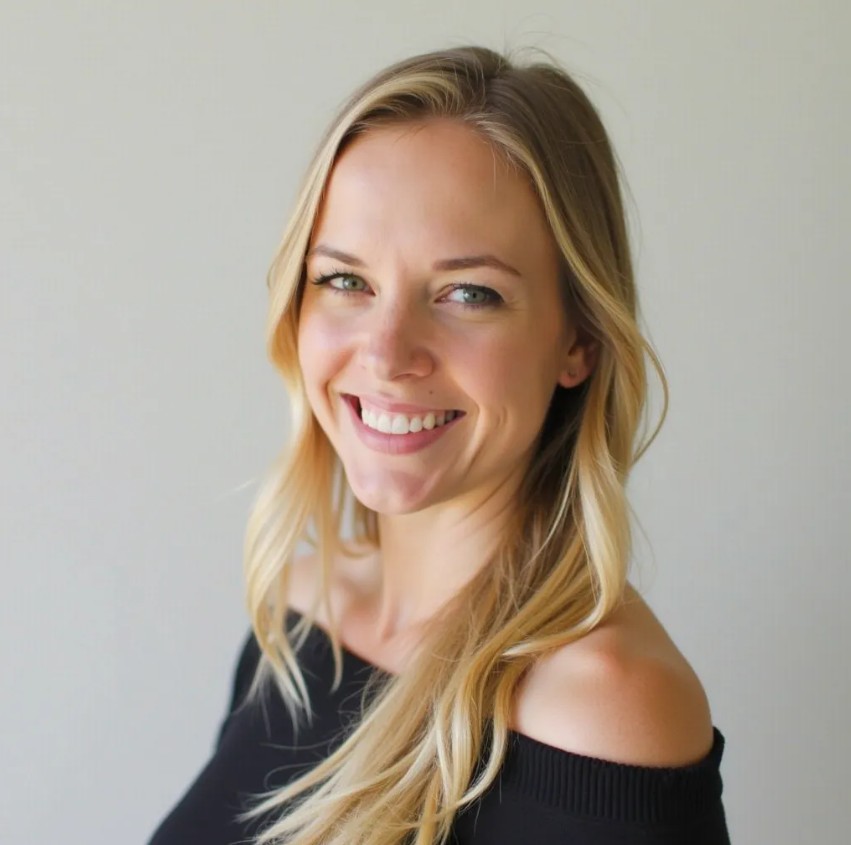
Coming Out as Lesbian/Bi/Queer After 35: Navigating Woman-to-Woman Relationships Later in Life
Reading time: 12 minutes
Ever felt like you’re discovering a completely new version of yourself after decades of thinking you had it all figured out? You’re absolutely not alone. Let’s dive into the beautiful, complex journey of coming out later in life and building authentic connections with women.
Table of Contents
- Understanding Late-Blooming Identity
- The Digital Dating Landscape for LGBTQ+ Women 35+
- Building Meaningful Connections
- Overcoming Common Challenges
- Creating Your Support Network
- Your Authentic Journey Forward
- Frequently Asked Questions
Understanding Late-Blooming Identity
The term “late bloomer” in LGBTQ+ contexts refers to individuals who discover or acknowledge their sexual orientation or gender identity later in life. Research from the Williams Institute indicates that approximately 23% of women who identify as lesbian or bisexual came out after age 30. This isn’t about being “late” to anything—it’s about authentic self-discovery on your own timeline.
Why Some Women Discover Their Sexuality Later
Several factors contribute to later-life sexual identity discovery:
- Societal expectations and heteronormativity that shaped early life choices
- Compulsory heterosexuality—feeling pressured to pursue relationships with men
- Limited representation in media and social circles during formative years
- Life transitions like divorce, empty nest syndrome, or career changes creating space for self-reflection
Case Study: Maria’s Story
Maria, 42, divorced mother of two, describes her realization: “I thought I was just really particular about men. It wasn’t until my divorce that I allowed myself to examine why I felt more emotionally and physically drawn to my close female friends. The relief of finally understanding myself was overwhelming.”
The Unique Advantages of Later-Life Discovery
Coming out after 35 brings distinctive strengths to relationship building:
- Emotional maturity and better communication skills
- Financial stability and established independence
- Clear sense of values and relationship priorities
- Reduced tolerance for drama and unhealthy dynamics
The Digital Dating Landscape for LGBTQ+ Women 35+
Navigating dating apps as a newly-out woman over 35 requires strategic approach. Here’s the reality: dating apps specifically designed for LGBTQ+ women see their highest growth in the 35-45 age demographic, according to 2023 data from HER app.
Platform Comparison for Women-Loving-Women
| Platform | Best For | Age Range Focus | Key Features | Cost Range |
|---|---|---|---|---|
| HER | Serious relationships & community | 25-45 | Events, community posts | $15-30/month |
| Bumble | All relationship types | 30-50 | Women message first | $20-40/month |
| OkCupid | Compatibility-focused | 25-55 | Detailed profiles, questions | $10-25/month |
| Zoe | LGBTQ+ women exclusively | 22-40 | Personality matching | $10-20/month |
| Hinge | Long-term relationships | 28-45 | Prompts, conversation starters | $20-35/month |
Dating App Success Statistics for Women 35+
Relationship Outcomes by Platform Type
Crafting Your Authentic Profile
Pro Tip: Your profile should reflect where you are now, not where you think you should be. Authenticity attracts the right connections.
Essential profile elements for success:
- Recent photos that show your genuine personality
- Clear about your journey—many women appreciate honesty about being newly out
- Specific interests rather than generic statements
- What you’re seeking—friendship, dating, or serious relationship
Building Meaningful Connections
The art of building woman-to-woman relationships involves understanding unique dynamics that differ from heterosexual dating patterns. Research from the Journal of Lesbian Studies shows that women in same-sex relationships prioritize emotional intimacy 89% more than physical attraction initially.
Understanding Lesbian Dating Culture
Several concepts are particularly relevant for newcomers:
- U-Hauling—The tendency to move quickly in relationships (named after the joke about lesbians bringing a U-Haul to the second date)
- Processing—Deep emotional conversations are more common and expected
- Friend overlap—The lesbian community is often interconnected; your ex might become your friend’s partner
- Gender expression fluidity—Partners may express femininity and masculinity differently than heteronormative expectations
First Date Strategies That Work
Case Study: Jennifer’s Approach
Jennifer, 38, found success by treating first dates as “friend auditions.” She explains: “I stopped putting pressure on romantic chemistry and focused on whether I genuinely enjoyed this person’s company. The relationships that developed naturally from friendship have been the most fulfilling.”
Effective first date ideas for women 35+:
- Coffee shop conversations—Low pressure, easy exit strategy
- Museum or gallery visits—Built-in conversation starters
- Cooking classes—Collaborative and fun
- Hiking or walking—Side-by-side conversation feels less intense
Overcoming Common Challenges
Challenge 1: Impostor Syndrome in LGBTQ+ Spaces
Many women coming out later feel like they don’t “qualify” as legitimate members of the LGBTQ+ community. This feeling affects approximately 67% of late-blooming lesbian and bisexual women, according to research from the National Center for Transgender Equality.
Solutions:
- Recognize that your timeline is valid
- Seek out online communities specifically for late bloomers
- Practice self-compassion—you’re not behind, you’re exactly where you need to be
Challenge 2: Explaining Your Journey to Potential Partners
How do you communicate your late-discovery story without seeming uncertain or experimental?
Communication Scripts That Work:
- “I’ve recently come to understand this important part of myself”
- “My journey to authenticity led me here”
- “I’m new to dating women but not new to knowing what I want in relationships”
Challenge 3: Navigating Existing Family Relationships
Coming out after 35 often means navigating complex family dynamics, especially if you have children from previous relationships.
Case Study: Rebecca’s Transition
Rebecca, 44, mother of three teenagers, found that gradual introduction worked best: “I introduced my girlfriend as a ‘close friend’ initially. Once my kids saw how happy I was, the formal conversation about our relationship felt natural and unforced.”
Creating Your Support Network
Building community is crucial for successful navigation of this life transition. Your support network should include multiple layers:
Professional Support
- LGBTQ+-affirming therapists who understand late-life coming out
- Support groups for women in similar situations
- Career counselors if workplace concerns exist
Community Connections
- Local LGBTQ+ centers often have 35+ groups
- Meetup groups for lesbian/bi women
- Sports leagues and hobby groups
- Online forums like Reddit’s r/latebloomerlesbians
Building Your Chosen Family
The concept of “chosen family” is particularly important in LGBTQ+ communities. These are the people who support your authentic self unconditionally.
Key characteristics of chosen family members:
- Celebrate your growth and authenticity
- Provide emotional support during difficult transitions
- Include you in their important life events
- Respect your boundaries and timeline
Your Authentic Journey Forward
As you embark on this incredible chapter of self-discovery and authentic relationships, remember that your journey is uniquely yours. The landscape of LGBTQ+ acceptance continues evolving, with 2023 Gallup polling showing that 71% of Americans support same-sex marriage—the highest level of acceptance in history.
Your Personal Roadmap
Phase 1: Foundation Building (Months 1-6)
- Focus on self-acceptance and understanding your authentic desires
- Connect with supportive communities and resources
- Take time to process your journey without pressure to date immediately
Phase 2: Exploration (Months 6-18)
- Begin dating with low pressure—focus on making friends first
- Experiment with different social situations and dating approaches
- Maintain open communication with your support network
Phase 3: Integration (18+ months)
- Develop confidence in navigating LGBTQ+ spaces and relationships
- Consider deeper commitments as you understand what you truly want
- Possibly become a mentor for other women beginning their journeys
Your courage to live authentically after 35 represents not just personal growth, but also contributes to a more inclusive society where women of all ages feel empowered to discover and express their true selves.
What aspect of this journey feels most exciting to you right now? Remember, every step forward is a victory worth celebrating. Your authentic life is waiting, and it’s never too late to embrace who you’re meant to be.
Frequently Asked Questions
Is it normal to question my sexuality after being in heterosexual relationships for years?
Absolutely. Sexual identity can evolve throughout life, and many women report questioning or discovering their attraction to women after years of heterosexual relationships. The term “sexual fluidity” recognizes that attraction exists on a spectrum and can change over time. Your feelings are valid regardless of when you experience them.
How do I know if I’m actually lesbian/bi or just going through a phase?
The key is examining your feelings honestly without external pressure. Ask yourself: Do you feel genuine romantic and/or sexual attraction to women? Does thinking about future relationships with women feel authentic and exciting? Phase-questioning often comes from internalized doubt—trust your instincts and give yourself time to explore without rushing to label yourself definitively.
What if my family or existing friends don’t accept my new relationship?
This is one of the most challenging aspects of coming out later in life. Start by having honest conversations with those closest to you, sharing your feelings and experiences. Some relationships may need time to adjust, while others might require boundaries. Focus on building your chosen family while maintaining hope that biological family relationships can evolve. Professional counseling can help navigate these complex dynamics.

Article reviewed by Valentina Silva, Passion & Intimacy Guide | Reigniting Spark in Long-Term Relationships, on May 29, 2025



